


Top Injury Prevention Tips

Embarking on a fitness journey is an exciting and commendable endeavor. Whether you're a newbie or a seasoned fitness enthusiast, preventing injuries is paramount to ensure your long-term success and well-being. In this article, we'll explore some valuable injury prevention tips to help you stay on course and make the most of your fitness journey.
1. Start Slow And Gradual: One of the most common mistakes people make when beginning a fitness journey is diving in too quickly and intensely. To prevent injuries, start slow and gradually increase the intensity and duration of your workouts. Your body needs time to adapt to the new demands.
2. Proper Warm-Up And Cool-Down: Warming up is crucial to prepare your muscles and joints for exercise. A proper warm-up should include light cardiovascular activity, dynamic stretching, and mobility exercises. After your workout, engage in a cool-down routine to help your body recover and reduce post-exercise soreness.
3. Listen To Your Body: Paying close attention to your body is essential. If you experience pain, discomfort, or unusual sensations during a workout, stop immediately. Ignoring these warning signs can lead to injuries. It's okay to push yourself, but not at the expense of your health.
4. Choose The Right Footwear: Invest in appropriate athletic shoes designed for your chosen activity. Ill-fitting or worn-out shoes can lead to discomfort, instability, and injury. Consult a specialist to find the right pair for your needs.
5. Cross-Training: Variety in your workouts is a key injury prevention strategy. Cross-training involves engaging in a mix of activities, which helps avoid overuse injuries. For example, if you're a runner, consider adding swimming or cycling to your routine.
6. Strength And Flexibility Training: Incorporate strength training and flexibility exercises into your fitness plan. Building muscle and improving flexibility can enhance your overall performance and reduce the risk of injuries.
7. Proper Form And Technique: Improper form and technique are common culprits for exercise-related injuries. Seek guidance from a qualified trainer or coach to ensure you're performing exercises correctly and safely.
8. Hydration And Nutrition: Adequate hydration is essential for optimal performance and injury prevention. Proper nutrition provides the fuel your body needs to recover and adapt to exercise. Balance your macronutrients and consume a variety of vitamins and minerals to support your fitness goals.
9. Rest And Recovery: Your body requires time to rest and recover. Overtraining can lead to fatigue, decreased performance, and increased injury risk. Make sure to schedule rest days into your fitness routine, and prioritize quality sleep for recovery.
10. Injury Prevention Workshops: Consider attending injury prevention workshops or classes. These sessions can teach you specific techniques to prevent injuries in your chosen activity and offer valuable insights from experts.
11. Consult A Healthcare Professional: If you have a pre-existing condition or are unsure about your fitness routine's suitability, consult a healthcare professional. They can provide personalized guidance to ensure your fitness journey is safe and effective.
Injury prevention is a crucial aspect of your fitness journey. By implementing these tips, you can reduce the risk of exercise-related injuries and enjoy a safe, productive, and fulfilling path to improved fitness. Remember, a balanced approach, proper guidance, and attentive self-care are the keys to a successful and injury-free fitness journey.


Mastering The Ocean's Dance
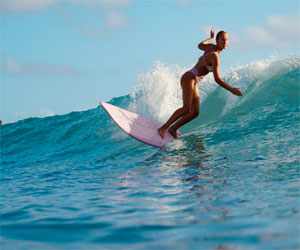 Balance is a fundamental aspect of the art of riding the waves. Surfing is about harmonizing the body's equilibrium with the dynamic forces of the ocean. The surfer stands atop their board, shifting their weight in precise, nuanced movements to maintain control and navigate the waves. It's a dance that demands poise and coordination, and over time, surfers develop an intuitive sense of balance that becomes second nature.
Balance is a fundamental aspect of the art of riding the waves. Surfing is about harmonizing the body's equilibrium with the dynamic forces of the ocean. The surfer stands atop their board, shifting their weight in precise, nuanced movements to maintain control and navigate the waves. It's a dance that demands poise and coordination, and over time, surfers develop an intuitive sense of balance that becomes second nature.
A crucial element of this art is timing. To catch a wave and ride it effectively, surfers must judge the perfect moment to paddle and pop up onto their board. This split-second decision is the difference between a thrilling ride and an untimely wipeout. It's a testament to the artistry of surfing that even the most experienced surfers never stop honing their timing skills.
The art of riding the waves also encompasses the rider's connection to their surfboard. Surfboards come in various shapes and sizes, each designed for specific wave conditions and styles of riding. The choice of surfboard is akin to selecting a paintbrush for an artist or an instrument for a musician. The surfer must understand their board intimately, recognizing its capabilities and limitations to create a harmonious synergy between themselves and their craft.
Furthermore, surfing is not just about conquering the ocean; it's about understanding and respecting it. Surfers are stewards of the sea, often leading the charge in environmental conservation efforts.
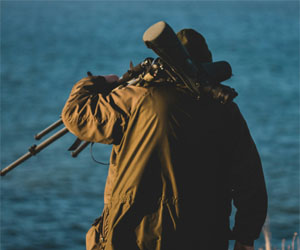

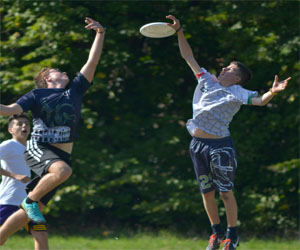

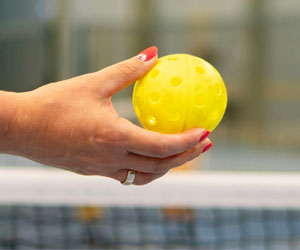
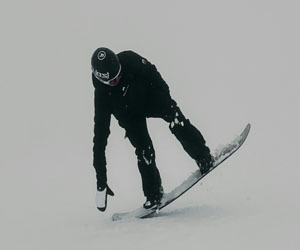
A Journey From Novice To Pro
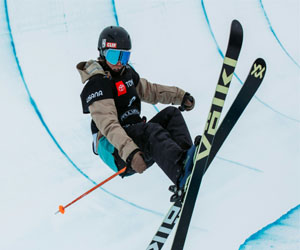 Balance: Maintaining proper balance on your skis is essential. Learn to distribute your weight evenly and stay centered on your skis.
Balance: Maintaining proper balance on your skis is essential. Learn to distribute your weight evenly and stay centered on your skis.
Turning: Start with basic wedge turns, also known as snowplow turns. As you progress, aim to transition to parallel turns, where both skis move together smoothly.
Stopping: Perfecting your stopping technique is crucial for safety. Master the art of the snowplow stop before progressing to more advanced methods.
2. Progressing To Intermediate Level
Once you've established a solid foundation, it's time to advance your skills:
Carving: Carving involves using the edges of your skis to create smooth, controlled turns. Focus on edging and weight distribution to perfect your carving technique.
Terrain Variety: Experiment with different types of slopes, from groomed runs to more challenging terrain. Learning to navigate varying conditions will broaden your skiing skill set.
Speed Control: Advanced skiers have precise control over their speed. Work on your ability to increase or decrease your velocity as needed, enhancing your overall mastery of the mountain.
3. Embracing Advanced Techniques
To truly excel in skiing, consider these advanced techniques:
Moguls: Tackling mogul fields is a hallmark of a seasoned skier. Learning to absorb the bumps with your legs and make controlled turns around them takes practice and finesse.
Powder Skiing: Skiing in powder snow is a dream for many enthusiasts. Keep your weight centered and make gentle, flowing movements to stay afloat on the soft snow.
The Art Of Riding The Waves
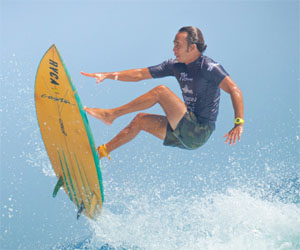 The Physical Demands: Surfing is an incredibly physically demanding sport. Surfers must paddle out against the force of incoming waves, which can be strenuous. Paddling requires upper body strength and endurance, making surfers some of the fittest athletes. Additionally, maintaining balance on the board, performing maneuvers, and navigating the waves necessitate core strength, agility, and coordination.
The Physical Demands: Surfing is an incredibly physically demanding sport. Surfers must paddle out against the force of incoming waves, which can be strenuous. Paddling requires upper body strength and endurance, making surfers some of the fittest athletes. Additionally, maintaining balance on the board, performing maneuvers, and navigating the waves necessitate core strength, agility, and coordination.
Competitive Surfing: Surfing competitions are a testament to its status as a sport. Events like the World Surf League (WSL) and the Olympics have brought surfing to a global stage. Competitive surfers are judged based on a variety of criteria, including the difficulty of maneuvers, style, flow, and how well they read and ride the waves. These competitions are highly intense, featuring some of the world's most skilled athletes.
The Skill Of Wave Riding: Surfing is an art form that involves a deep understanding of wave dynamics and the ability to harness their power. Surfers read the waves, anticipate their behavior, and position themselves to catch and ride them effectively. Riding waves with style, grace, and precision is an integral part of the sport.
Navigating The Thrills Of The Game
 2. Tactical Maneuvers
2. Tactical Maneuvers
Paintball adventure challenges often require tactical maneuvers to outsmart opponents and gain the upper hand. These maneuvers include flanking, taking cover, and setting up ambushes. Strategic thinking is essential to overcome your adversaries, seize key positions, and achieve objectives.
3. Objective-Based Challenges
Many paintball games involve specific objectives, such as capturing flags, defending positions, or retrieving items from the battlefield. These challenges add a layer of complexity to the game and demand teamwork, communication, and precise execution to succeed.
4. Ammo Conservation
Paintballs are a limited resource, and players must strategize to conserve their ammunition. Running out of paintballs can leave you vulnerable, so managing your shots effectively is a critical challenge in paintball adventures.
5. Precision Marksmanship
Achieving precision shots is not just a tactic; it's a significant challenge. Hitting your target requires excellent marksmanship skills, steady aim, and the ability to calculate trajectories, making every shot count.
A Timeless And Inclusive Pursuit
 Connecting Generations: Birdwatching provides a unique opportunity for intergenerational bonding. Grandparents can share their wisdom with grandchildren, passing on their love for birds and the outdoors. These shared experiences create lasting memories and strengthen family ties.
Connecting Generations: Birdwatching provides a unique opportunity for intergenerational bonding. Grandparents can share their wisdom with grandchildren, passing on their love for birds and the outdoors. These shared experiences create lasting memories and strengthen family ties.
Mental Stimulation: For older adults, birdwatching can be a mentally stimulating activity that keeps the mind active and engaged. Learning about birds, their behaviors, and their habitats can be intellectually rewarding. It also encourages older individuals to stay curious and inquisitive.
Physical Activity: Birdwatching often involves outdoor exploration, whether in a local park, nature reserve, or forest. This means gentle physical activity, such as walking and hiking, which can help maintain fitness and mobility, making it a healthy pastime for seniors.
Relaxation And Stress Reduction: For individuals of all ages, birdwatching offers a therapeutic escape from the stresses of daily life. The act of observing birds in their natural habitats can be a calming and meditative experience, reducing stress and promoting mental well-being.
Low-Cost Recreation: Birdwatching is a cost-effective pastime. It doesn't require expensive gear or club memberships. This affordability makes it accessible to individuals and families regardless of their economic status.